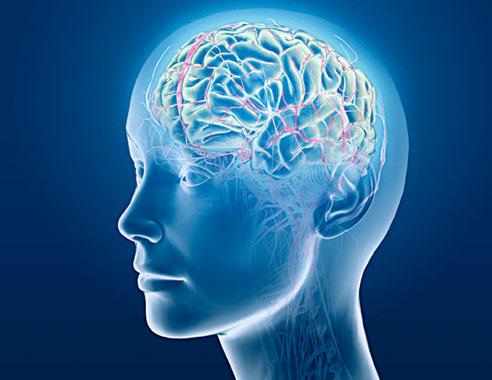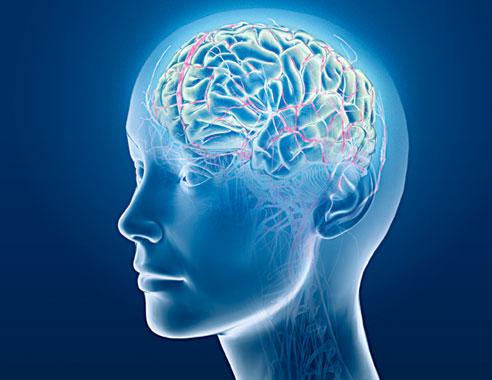 Conversion disorder, factitious disorder, and malingering have one major characteristic in common: they represent conditions that are not ‘real’. However, ‘real’ is a vague word and it is important to understand the differences between these conditions. Properly diagnosing your patient with one of these psychiatric ailments will allow you to create appropriate plans of care for your patients.
Conversion disorder, factitious disorder, and malingering have one major characteristic in common: they represent conditions that are not ‘real’. However, ‘real’ is a vague word and it is important to understand the differences between these conditions. Properly diagnosing your patient with one of these psychiatric ailments will allow you to create appropriate plans of care for your patients.
1. Conversion Disorder: is a psychiatric condition that results in a neurological complaint or symptom, without any underlying neurological cause. Patient’s may experience seizures (i.e. ‘pseudoseizures’), weakness, non-responsiveness, numbness, and even vision loss. The symptoms are not intentional, the patient is not faking or intentionally creating his/her complaints, yet upon further investigation no biological explanation for the symptoms can be found. The symptoms, therefore, are ‘real’ to the patient but are not caused by any ‘real’ pathology. The current thought is that the symptoms are somehow caused by an overload of emotional stress in the body. The name “conversion disorder” comes from Sigmund Freud who stated that stress can cause a psychiatric ailment to ‘convert’ to a medical problem. Do not fall into the trap, however, of many students/doctors/nurses who say the patient is ‘faking’. While you may know that a patient complaining of sudden vision loss has a completely healthy eye without disease, the patient’s eye and brain are actually NOT processing any sight. Alternatively, a case that I have seen a number of times, a patient with syncope from conversion disorder whose labs, tests, vital signs, and clinical status are completely normal will actually NOT respond to painful stimuli (sternal rub, nail bed pressure, supraorbital pressure) during an episode. It is important to remember the unintentional nature of conversion disorder when discussing the condition with a patient. To them it is REAL, even if to you it seems fake.
Studying for the Psychiatry Rotation? Check out First Aid for the Psychiatry Clerkship
2. Factitious Disorder (a Somatoform Disorder): is a condition where patients intentionally fake disease, or intentionally cause disease in order to play the ‘patient role’. The main distinction between this and conversion disorder is the intentional nature of factitious disorder. Often referred to a Munchausen Syndrome, factitious disorder is characterized by patients frequently feigning illness to obtain attention, sympathy, or other emotional feedback. They achieve this goal through exaggerating symptoms, deliberately faking symptoms, or even intentionally creating real symptoms. Patients have been known to contaminate their own body fluids, even injecting themselves with dirt, bacteria, or fecal matter in order to create illness that will then lead to primary emotional gain. A related disorder is known as Munchausen by Proxy, which is characterized by a person intentionally faking or causing illness in another (usually a child) in order to obtain the same emotional feedback. Victims of Munchausen by Proxy are often children who return to the hospital time and time again with infections or other ‘ailments’ that are either fabricated or intentionally created by their caregiver.
3. Malingering: is the intentional faking or creating of illness in order to obtain secondary gain (e.g. workers compensation, disability payments, avoiding work or jail time, pain medication, etc.) Malingering is NOT a psychiatric illness; this is the first major distinction from the other two disorders. Malingering is an intentional abuse of the medical system to obtain personal benefit. The difference between malingering and factitious disorder is the goal of the patient; malingerers abuse the system to obtain secondary gain while patients with factitious disorder attempt only to obtain emotional, or primary gain. In simpler terms, the end goal of a malingerer usually involves monetary value, while the goals of patients with factitious disorder have no such value.
QUICK REVIEW:
- Conversion Disorder: Unintentional, due to emotional stressors, no ‘gain’ to the patient
- Factitious Disorder (Munchausen): Intentional, primary or ’emotional’ gain
- Malingering: Intentional, secondary and often monetary gain









 My name is Andrew and I am a first year resident training to be an ophthalmologist. I created ShortWhiteCoats to provide medical students, residents, and the public with all the information I spent so many hours looking for during medical school.
My name is Andrew and I am a first year resident training to be an ophthalmologist. I created ShortWhiteCoats to provide medical students, residents, and the public with all the information I spent so many hours looking for during medical school.









13 comments
Skip to comment form ↓
anil
October 4, 2012 at 5:16 am (UTC -4) Link to this comment
helpfull. thank you.
AR
June 25, 2013 at 1:49 am (UTC -4) Link to this comment
that was useful,thanks
nida
March 29, 2014 at 3:23 am (UTC -4) Link to this comment
good interpretation…that was really helpful
Sumaira
March 30, 2014 at 12:33 am (UTC -4) Link to this comment
thanks, it was useful article!!!!
Kate Salmon
April 24, 2014 at 3:53 pm (UTC -4) Link to this comment
Thanks. this is the most concise and clear definition of conversion disorder I have read. As a teacher with a suffering student, it is helpful.
raka
March 25, 2015 at 2:54 am (UTC -4) Link to this comment
Than you. That was helpfully
Dianne
November 30, 2015 at 8:53 pm (UTC -4) Link to this comment
Thank you for the clear concise difference between conversion and fixticious disorder. It really helped me and gave me peace of mind that I have conversion–I'm getting no gain. In fact I try to hide the symptoms so others aren't aware of how frequently they occur.
Anonymous
February 25, 2016 at 2:00 pm (UTC -4) Link to this comment
Thank you so much. You expalined it better than my professor
Anonymous
October 9, 2016 at 11:17 am (UTC -4) Link to this comment
Hi, I appreciate the clarity.
Linda
Anonymous
October 19, 2016 at 8:18 pm (UTC -4) Link to this comment
Thanks for clarity in identifying conversion disorder.
sasha lyte
October 27, 2016 at 10:50 am (UTC -4) Link to this comment
Thank you very much for your concise definition of here. this was very helpful
P
April 4, 2017 at 9:45 am (UTC -4) Link to this comment
Thanks! I am Adolsecent med faculty…great description
Laura Lanter
April 14, 2017 at 4:07 pm (UTC -4) Link to this comment
I believe that the first time I was diagnosed with "conversion disorder" was in fact the common side effect of the drug Lamictal. After one week in the hospital 2 years ago followed by 3 weeks in a physical rehabilitation hospital learning to walk again my pharmacist gave me the phone number to the drug's manufacturer Glaxo-Smith-Cline where one of their specialists in Lamictal told me that in all of their pre-FDA approval studies that as high as 20% of the patients who took the drug experienced some degree of "Ataxia" which is when the drug adversely affects the cerebellum of the brain. He stated that my case sounded like a very severe case of Ataxia. I began having trouble walking within 3 days of being bumped up to 100mg 2 times per day. I lost ALL ABILITY TO BALANCE , within the next 42 hours. My physician went on vacation the same afternoon that she had bumped me up to the full dose but the physician who was on call for her immediately recognized the likelihood that I was experiencing Ataxia as the result of being on the full dose and immediately backed me back down to 50 mg 2 times per day and said she felt certain that my own physician would continue to titrate me the rest of way off Lamictal when she returned. She also had me write down her very detailed notes about her diagnosis and the date I went up to 100 mg 2 times per day and the date that she began to titrate me back down and EXPLICITLY TOLD ME TO PUT THEM IN MY PURSE "just in case anything else strange started or my balance got worse. If either happened she instructed me to call 911 immediately and to give those notes to the ER Drs so they would know how best to treat me. I went to the ER late on a Friday evening and was admitted after a brain CAT scan to insure I had not had a stroke. But the neurologist who was pulling hospital duty that weekend DID NOT LOOK AT THE ER NOTES OR AT MY CHART where he could have easily seen that Lamictal was a new medication for me. I have some psychiatric diagnosises of PTSD and depression and borderline personality disorder so I believe he just treated me like a nutcase. IT IS AN EXTREMELY SERIOUS PROBLEM for people with any sort of psychiatric diagnosis to receive any where close to the same quality of Medical Care than those who do not. THIS NEEDS TO CHANGE!